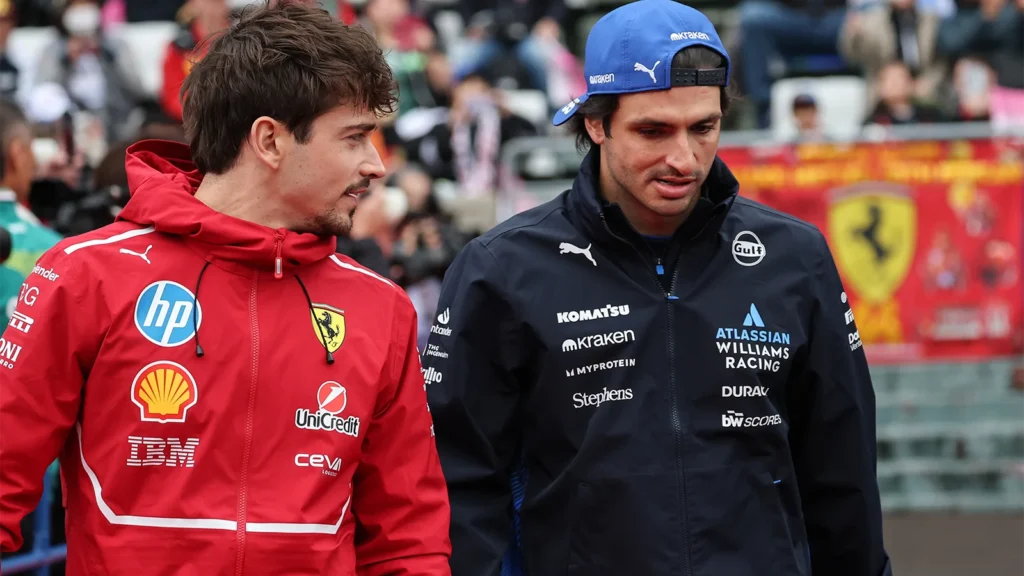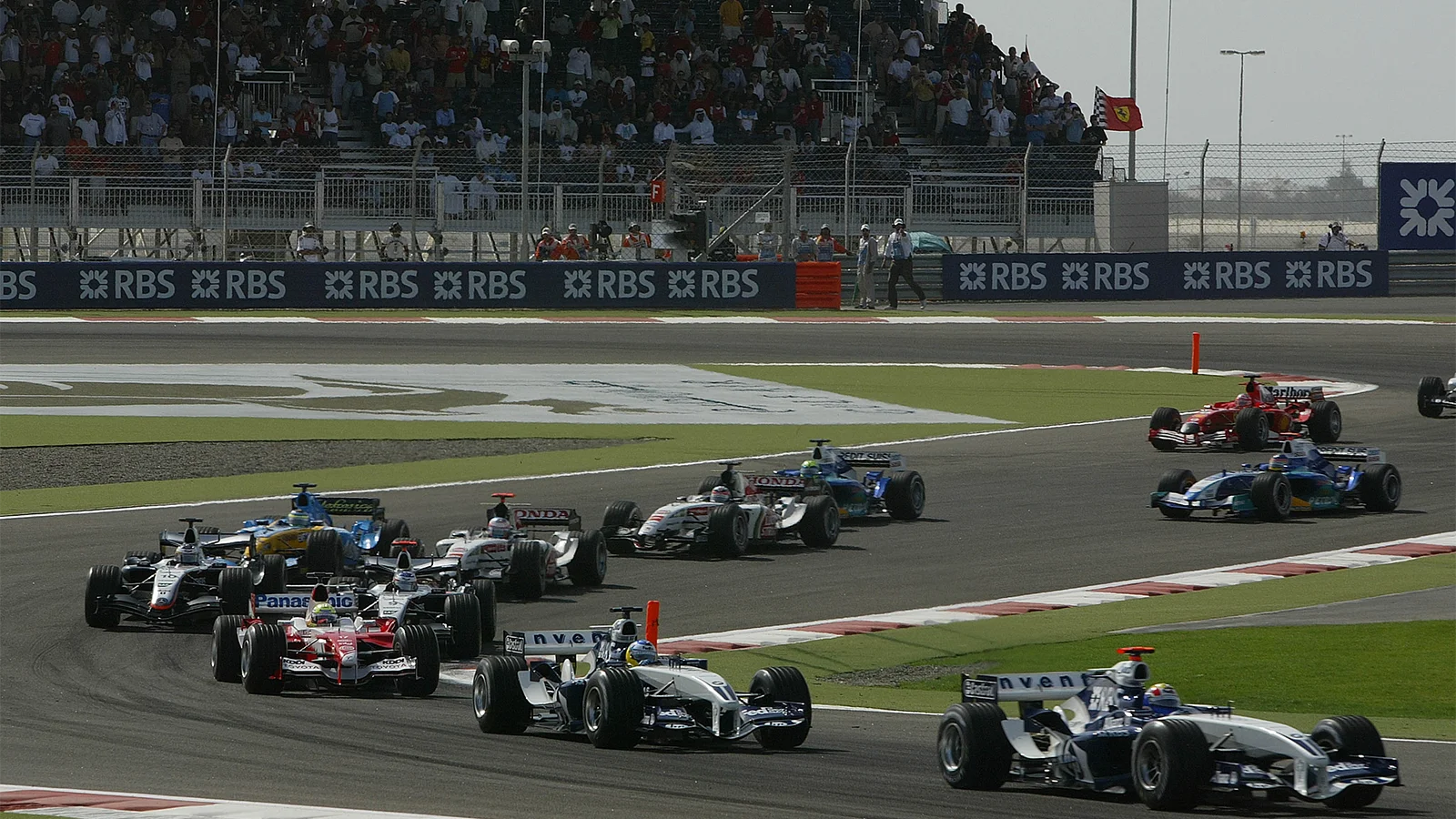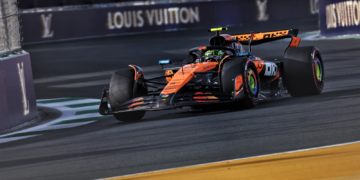Key Formula 1 stakeholders and team bosses have a shared desire to shelve plans to reintroduce V10 engines for the time being to focus on making a success of the 2026 regulations, but is that the right call to make?
FIA president Mohammed proposed plans recently to reintroduce V10 engines with sustainable fuels to F1 in the next few years, to ease cost and performance concerns with the forthcoming 2026 engine formula. Next year’s engines will see the 1.6-litre turbo retained, running on sustainable fuels but with a greater electrical element, comprising a 50/50 power split.
That has helped entice the likes of Audi and Honda to be OEMs, and it’s understood they, along with Mercedes, were against curtailing the new engine formula by 2028, which would be at least two years ahead of what was originally planned.
Ben Sulayem met with paddock representatives for F1’s OEMs last Friday in Bahrain, with a Cadillac representative also present. Audi CEO Gernot Doellner, Ford’s Global Director of Performance Mark Rushbrook, and Mercedes Chairman Ole Kallenius joined proceedings via video call.
The meeting was put in place to discuss the validity of V10 engines in the future and ease concerns about the coming regulations.
It’s reported that the 2026 engine formula will continue as planned, but with measures to be discussed to mitigate costs, improve performance and address the ability for teams to recover lost ground. Moreover, the idea of switching to a roaring V10 power unit is being put into the long-term frame of thinking, with a switch unlikely until at least 2029 and some form of electrification likely needed if such an engine formula is introduced, perhaps via the reintroduction of KERS.
F1 bosses keen to halt V10 engine talk
Fresh from the meeting and sitting in front of F1 media during a Friday press conference were McLaren Team Principal Andrea Stella, Williams boss James Vowles and new Sauber Team Principal Jonathan Wheatley. All three were asked about the 2026 regulations and whether they held any concerns.
Stella was keen to stress that it’s up to the stakeholders in the sport to give these regulations a chance and engineer positively through any issues rather than looking to skip ahead.
“When we talk about the future regulations, we haven’t even started the 2026, and we are already talking about something else,” he began. “I would like to invoke a sense of responsibility by all the stakeholders because we are here to protect the interests of the sport. We don’t want to undermine what could be actually successful regulations. They may need some tuning and adjustments, but that’s what we are here for. Let’s define exactly the technical challenge and we can resolve it. But let’s all work united collaboratively towards the interest of the sport, which comes when we have a good product. And I think we can have a good product, I think in ‘26, we just have to walk towards it.”

Wheatley, as a spokesperson and leader of the Audi F1 project, made the German marque’s views on engine regulations clear.
“I understand a very open and productive and collaborative discussion today with all the major stakeholders [was held],” he said. “From what I understand, it’s got the best interests of F1 at heart, and that was the basis of the entire conversation. The feedback I’ve had was very encouraging. Just talking about 2026, it’s very clear Audi’s position. The reason they got involved in the sport is the excitement around the three pillars that we see is really important. The first one being a highly efficient engine, the second one being an advanced hybrid system, and of course, sustainable fuels being the bedrock of that.”
There are also concerns that with 2026 potentially being an engine-dominated formula, racing could be negatively impacted.
Indeed, the aero regulations have been designed to compensate for energy conservation with the 2026 power units, but as Vowles revealed, simulations show that racing could improve. Dirty air and following has reared its ugly head in a big way so far this season, Vowles believes that next year, this won’t be an issue.
“For us, the racing looks actually pretty good at the moment,” Vowels said. “I think it would be pretty good from a spectator perspective. I think the wake is better. I think the following will be better. So I’m not overly concerned at the moment.”
F1 drivers wary of 2026 engines
As much as F1 purists would love to see V10s make a grand entrance back to the sport, it looks like such an occurrence won’t happen for a long while yet.
This isn’t what everybody wants to hear, including Carlos Sainz and Charles Leclerc, who are both opposed to 2026’s incoming engines. They made their feelings clear on next year’s 2026 engine rules, preferring a return to raucous V10s.
V10s with sustainable fuels would be cheaper, noisier, and let’s face it, cooler.
Sainz, who sat in last Thursday’s Bahrain Grand Prix press conference, was asked to give his opinion and said, “I wouldn’t be too vocal supporting the comeback of a V10 engine if I liked what I saw from 2026.”
The Spaniard added “But as I don’t really like what I see from 2026 in terms of what the car is going to do, the engine’s going to do, the way everything is going to work, I would say yes—I would like a V10 engine with a few tweaks to make it back sooner rather than later.”
However, Sainz pointed out that the 2026 rules need a fair chance to shine.
“It’s not fair to not give those regulations a bit of a chance, if everyone believes they are so good,” he continued. “But everyone seems to believe that they are not so good anymore—that’s why everyone’s talking about it again. So a bit of a strange one, no? Let’s see where it goes. It’s not up to me. It’s politics. The big bosses will decide.”

The big bosses decided, and as Sainz implied, that the 2026 rules will get a chance to prosper, with solutions being discussed to mitigate concerns of costs, performance, and convergence.
Ferrari’s Leclerc, who spent four years racing alongside Sainz before his move to Williams, was asked to give his take on the back of the Spaniard’s remarks.
“I can definitely tell you what I think. I think V10 will be great,” he said. “What I’ve been seeing for next year is not something that is particularly exciting for me, and I’ll say most of us are sharing the same opinion. Maybe some will be more vocal than others for different reasons, but yeah, I think we all agree that V10 will be a much better solution.”
Leclerc conceded that drivers don’t really have a say in such matters, and how F1 will have to deal with the consequences of its decision-making.
“But yeah, we’ll go with what we are told to do, really, so I don’t think we have much say as drivers in these kinds of discussions, but it’s clear that for now, what we are looking at is not great – not only for racing, but for everything really,” he said. “Even in terms of safety, in some cases it’s quite tricky, so these are things that I think the FIA will look at, but I still don’t know if there’s enough time to tackle those things. I think this choice has been made, now, and we’ve got to deal with it in the best possible way, and our goal will be to be as competitive as possible, but yeah, from a driver point of view, it’s not that exciting.”
Indeed, F1 and the FIA decided on these rules in 2022, which enabled them to attract the likes of Audi and Ford (in collaboration with Red Bull), plus the return of Honda. The sport’s kingmakers then had to design the chassis and aero regulations around the problems posed by the power units, which is why we will be seeing movable aero at the front and rear of next year’s cars.
F1 is at an all-time high in terms of popularity and stature, its rude health evident by the likes of Audi, Honda and even Cadillac wanting a slice. But attracting OEMs is one thing, the lifeblood of a sport is fan interest, and it’s imperative the show doesn’t suffer at the whim of manufacturers.
READ MORE – Mercedes boss urges F1 to ‘push the pause button’ on V10 talk









